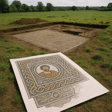
Alamut Castle
Episode two of the new season of Pieces of History delves into the captivating story of Alamut Castle.
In this episode, we’ll journey to the dramatic setting of this legendary stronghold, exploring its strategic location and uncovering the purpose behind its creation. We'll investigate who established and utilised Alamut, with a focus on the enigmatic Order of the Assassins and their intriguing history. Finally, we’ll trace the castle’s rise and eventual downfall, uncovering the layers of mystery and power that surround it.
Join me as I bring this remarkable chapter of history to life, revealing the significance of Alamut Castle and the legacy it left behind.
Email: piecesofhistorypod@outlook.com
Facebook: Pieces of History podcast
Instagram: @pieceofhistorypod



















